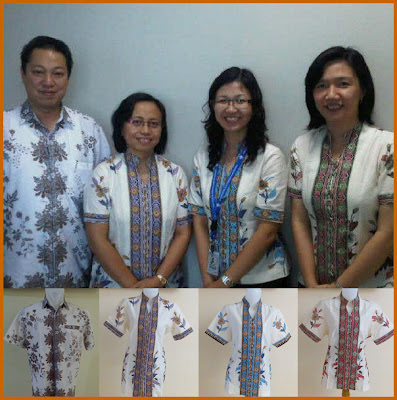
The application of wax with a
tjanting tool is done with great
care and therefore is very time-consuming. As the population increased
and commercial demand rose, time-saving methods evolved. Other methods
of applying the wax to the fabric include pouring the liquid wax,
painting the wax with a brush, and putting hot wax onto pre-carved
wooden or copper block (called a
cap or
tjap) and
stamping the fabric. The tjanting is used like a pen on the cloth.
The invention of the
copper block (
cap)
developed by the Javanese in the 20th century revolutionized batik
production. By block printing the wax onto the fabric, it became
possible to mass-produce designs and intricate patterns much faster than
one could possibly do by using a
tjanting.
Batik print is the common name given to fabric that incorporates batik pattern without actually using the
wax-resist dyeing
technique. It represents a further step in the process of
industrialization, reducing the cost of batik by mass-producing the
pattern repetitively, as a standard practice employed in the worldwide
textile industry.
At the end of 2012, PT. Pelindo IV Makassar, a batik printing
company, made a batik which extends 3046 meters. They needed 600 people
to stretch it along the Soekarno-Hatta Harbor. It breaks the Indonesian
Museum Record (Muri) and as well became the longest batik.
Source :
http://en.wikipedia.org/wiki/Batik







